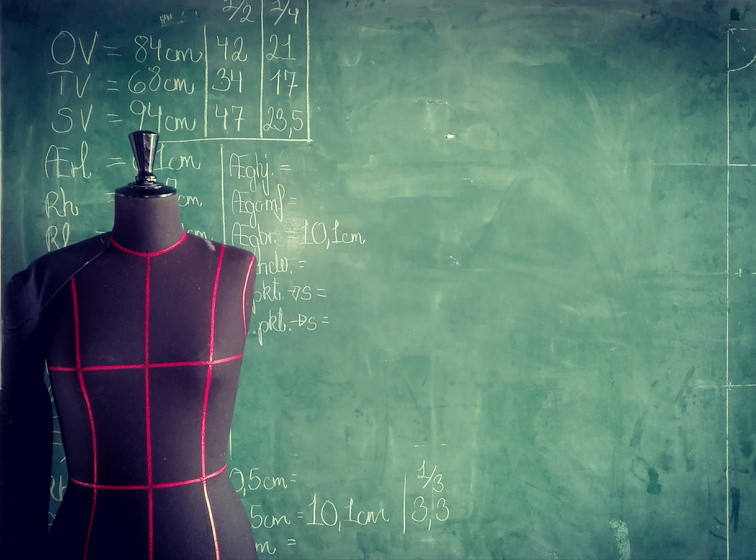Theory Lab: Theory as Creative Tool in Design Education

Fashionable form is created through a creative process that may involve visual research, textile experiments, draping, construction and staging. Theory – from fashion specific research to philosophy – can be useful in providing context for fashion objects as symbolic expressions.
At the KADK Fashion Design department, we find that theory also holds potential as conceptual sketching tools in fashion design education which may potentially create new forms of creative practices and visual displays in the fashion industry.
By including fashion theory, the premise of Theory Lab is an expansion on the “reflective conversation” (Schön and Wiggins 1992: 68) as the basis for creative expression as argued in “Kinds of Seeing in Designing”. The approach is based on creative design process as it unfolds within a studio set-ups. Here, the students not only “see” through visual media such as drawing, collage, draping, fabrics and so on; the process may also be informed through text and abstract theoretical concepts.
Theory Lab enables theory reading and debate as a method in visual registration and concept development, the “seeing”, as a form of creative discovery that merges practice and theory, material and thought for progressive fashion effect. The format marks a new direction in fashion design education by bridging the often imagined gap between theory and practice forming a hybrid potential rather than an obstacle.
Theory Lab as a didactic format lends itself to a potentially endless number of themes. An example of a Theory Lab courses at Fashion Design is “Fashion and Ethics” that look into themes of circular economy, CSR, production and wider issues of gender, sexuality, body, globalization and cultural appropriation. This course challenges the student to engage in fashion ethics through both theory and practice.
Regardless of the theme, the curriculum is organized in three themes over three weeks with both contemporary and historical texts which are discussed in the first session of each week projects. The informal study group enables the students to gain a deeper understanding of the specific theme as an essential part of developing their creative voice. Each student is then asked to create a 3D object that relates to the topic as part of integrating it into their own design aesthetic and philosophy. The week project finishes with a gallery presentations where each student acts as ´critic’ on another student project.

